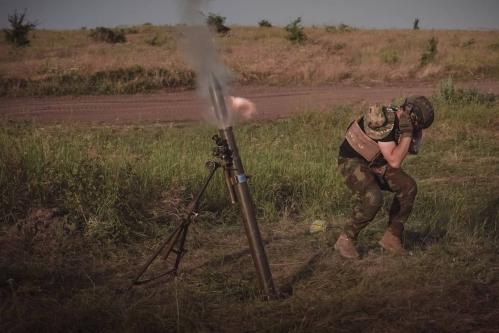I’d like to offer a brief response to William Dalrymple’s Brookings Essay, “A Deadly Triangle: Afghanistan, Pakistan, and India.” There is clearly much wisdom in the essay, and my concerns and critiques relate as much to how the essay might be misinterpreted as to what it actually says. But still, the subject matter at hand is so delicate, relations in the region so fragile and frayed, that I think it important to be sure that such an essay not be allowed inadvertently to pour fuel on the fire. And several of us at Brookings have been working with enough hopefulness on matters pertaining to Afghanistan, Pakistan, and the broader region that it would be regrettable if the Institution were incorrectly seen as resigning itself to fatalism about South and Central Asia.
Specifically, I would offer several observations:
- The fact that India and Pakistan have had very tense relations since “birth” is true and well known. But that fact does not condemn them to continue in the same vein forever. We must be careful not to extrapolate history into the future in a deterministic way—especially when those wishing to cause further trouble in the relationships in question would have us do exactly that. After all, other parts of the world have moved past their previous rivalries in some cases, particularly in Europe, and it would be unfair and incorrect to suggest that South Asians cannot do the same.
- The international community has been strongly present in Afghanistan—to the tune of more than 50 nations on the ground in one way or another—for a decade. And many will stay after next year, albeit in smaller numbers, but with substantial aid budgets and some not inconsiderable number of troops. There will be no complete vacuum for India and Pakistan to have to fill.
- India’s role in Afghanistan to date has been limited, and intentionally so, because Washington and Delhi and Kabul and other key capitals have recognized the potential for any larger Indian role to have undesirable effects. Let’s give credit where credit is due.
- Perhaps India could show even further restraint—for example, shutting down consulates in Pashtun parts of Afghanistan, since some Pakistanis see even civilian facilities there as cover for Indian military or intelligence shenanigans. This idea could be considered, provided that Islamabad pledge greater efforts to curtail insurgent activities emanating from its own soil.
- Afghanistan now has a security force that is 350,000 strong, which will continue to receive considerable international support for years to come, albeit with far fewer foreign boots on the ground. The ability of this force to help secure the country should never be underappreciated. It is already doing the brunt of the fighting in 2013. Afghans can and should be proud of their army and police, which are taking lots of casualties in defense of their nation now, and which will have some considerable say in determining the future of their country. They will be influenced by the actions of Pakistan in particular, to be sure, but they are not totally at the mercy of neighbors’ policies.
- President Karzai shows every indication of stepping down from power next year, and every indication (despite the weaknesses of his government at present) in trying to encourage some degree of interethnic collaboration in future Afghan governments. Most other Afghan leaders I know feel the same way. We should not let Afghanistan be portrayed as some Bosnia circa 1992, or akin to Syria today, rife with interethnic hatred and killing. Nor should we predict deterministically a proxy war pitting Tajiks supported by India against Pashtun supported by Islamabad. That is not the way Afghanistan or Afghans have been operating and there is little reason to believe they will do so in the future—provided, that is, that key friends of Afghanistan within and outside the country not give up on the place.
None of this is to predict an easy path ahead or to argue for a simple continuation of current policy by key nations. There is lots of room for improvement on many sides. Indeed, Bruce Riedel and I argued two years ago for a new U.S. policy that would support Pakistan’s army less and its civilian government and economy more. We would have further counseled the United States to increase aid and trade benefits for Pakistan additionally if it worked harder to curtail the activities of Afghan insurgents based on its soil. I would also admire greatly any Indian willingness to reopen negotiations with Pakistan on the Kashmir issue, should that prove possible. Indo-Pakistani détente would be a tremendous boon for the region and the international community and should be encouraged and incentivized at all turns.
But in the meantime, it is important that we not succumb to the temptation to predict fatalistically that the future in this crucial part of the world will automatically resemble the past, or to view Afghanistan as nothing more than the playground of neighboring powers. In fact, the situation is considerably more hopeful than such an image would suggest.
Watch my video Q&A on the India-Pakistan rivalry and its consequences for Afghanistan »


Commentary
Hope in ‘A Deadly Triangle’ of Afghanistan, Pakistan and India
July 3, 2013